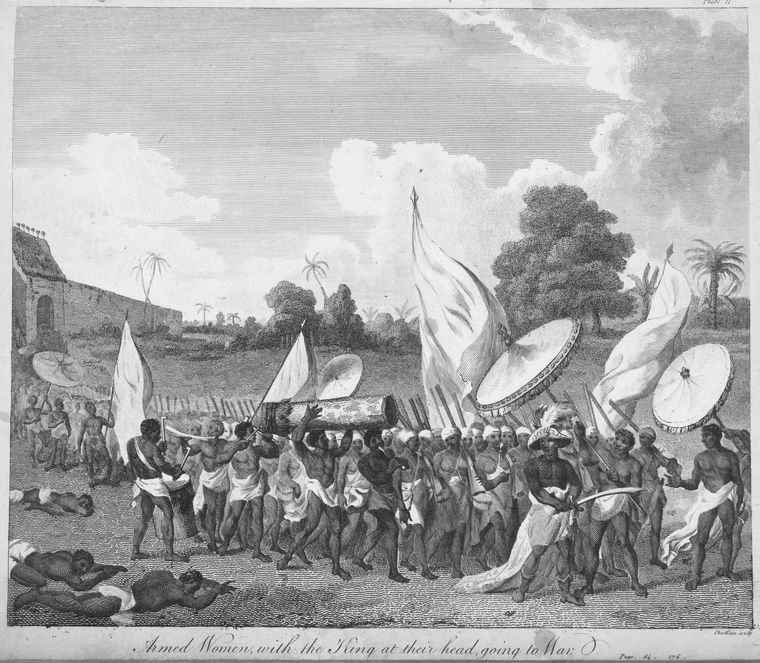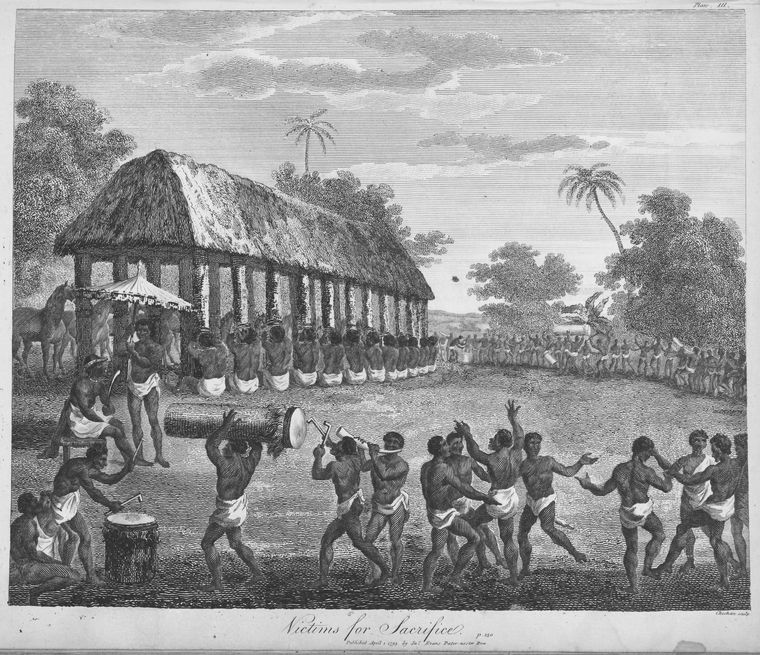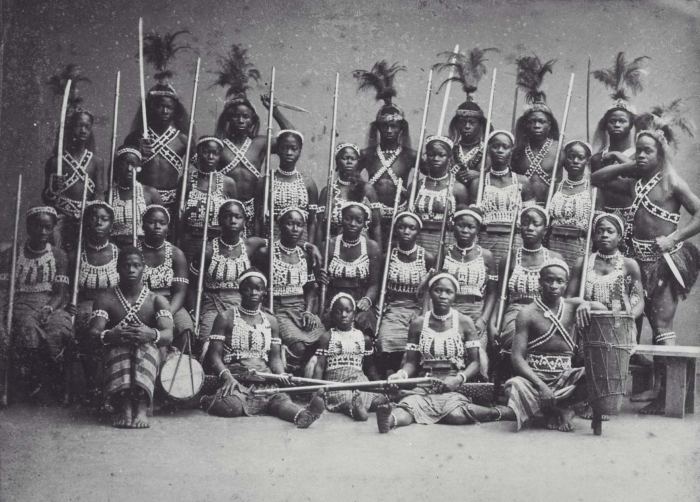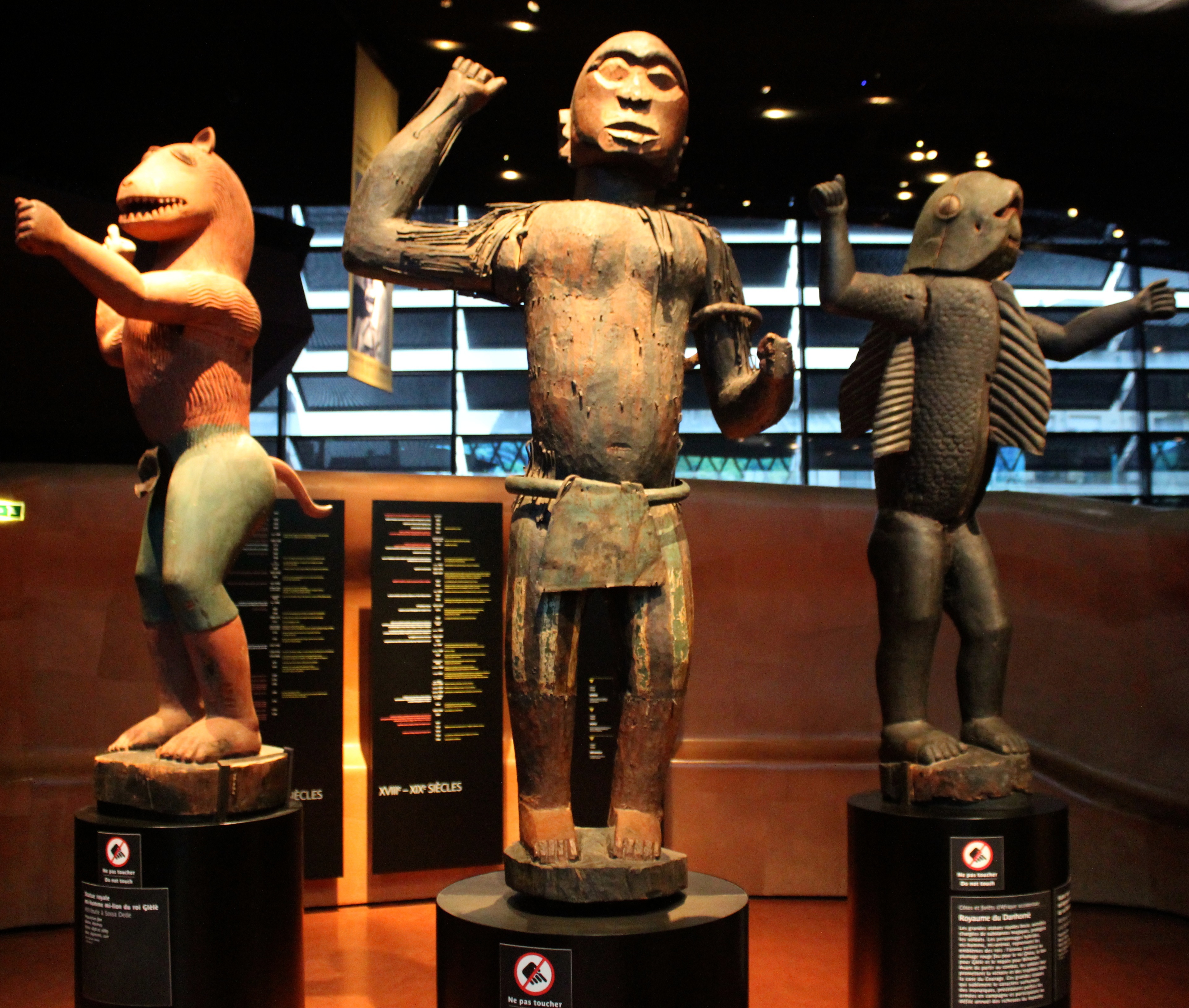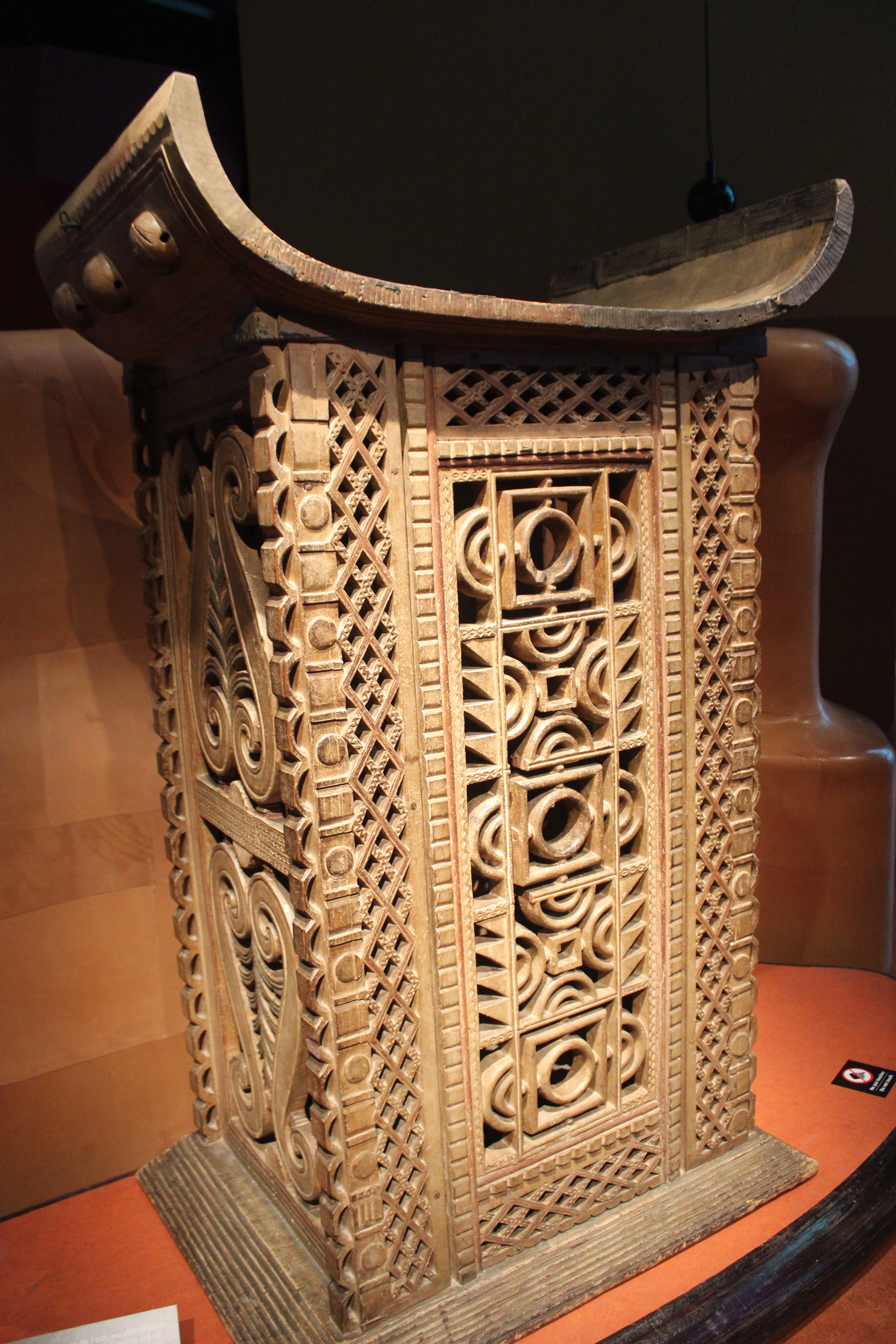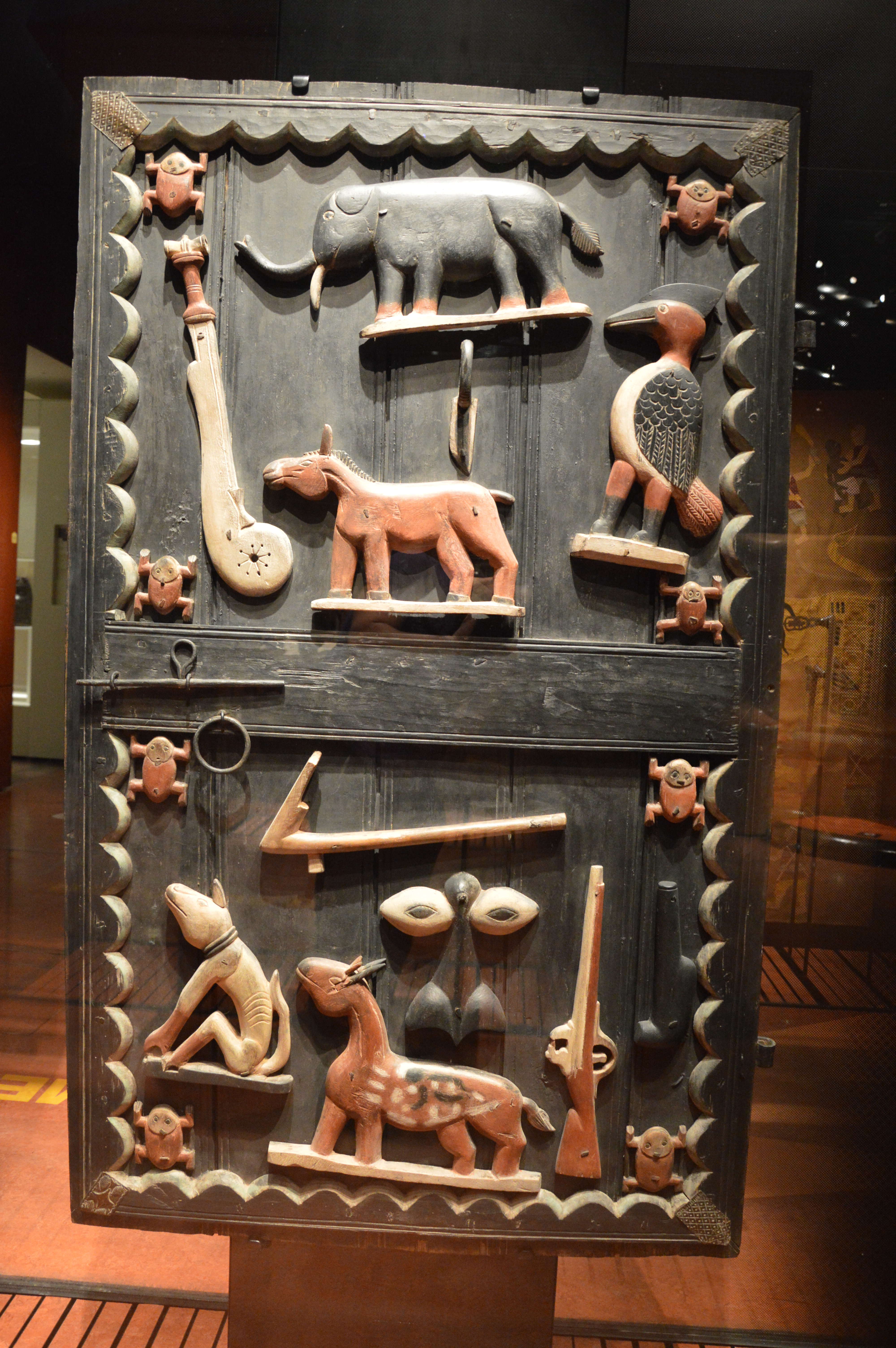Kingdom of Dahomey
- The Kingdom of Dahomey (/dəˈhoʊmi/) was an African kingdom (located within the area of the present-day country of Benin) that existed from about 1600 until 1894, when the last king, Béhanzin, was defeated by the French, and the country was annexed into the French colonial empire.
- The Kingdom of Dahomey was an important regional power that had an organized domestic economy built on conquest and slave labor, significant international trade with Europeans, a centralized administration, taxation systems, and an organized military.
- Dahomey developed on the Abomey Plateau amongst the Fon people in the early 17th century and became a regional power in the 18th century by conquering key cities on the Atlantic coast.
- The foundational king for Dahomey is often considered to be Houegbadja (c. 1645–1685), who built the Royal Palaces of Abomey and began raiding and taking over towns outside of the Abomey plateau.
- Notable in the kingdom were significant artwork, an all-female military unit known as the Dahomey Amazons, and the elaborate religious practices of Vodun with the large festival of the Annual Customs of Dahomey. Dahomey had a unique form of West African Vodun that linked together preexisting animist traditions with vodun practices.
- The Dahomey Amazons or Mino, which means "our mothers," were a Fon all-female military regiment. They were rigorously trained and given uniforms. The women's army consisted of a number of regiments: huntresses, riflewomen, reapers, archers, and gunners. Each regiment had different uniforms, weapons and commanders. In the latter period, the Dahomean female warriors were armed with Winchester rifles, clubs and knives. Units were under female command.
- Common art forms included wood and ivory carving, metalwork (including silver, iron and brass), appliqué cloth, and clay bas-reliefs. Much of the art work revolved around the royalty.
- The Royal Palaces of Abomey contained elaborate bas-reliefs (noundidė in Fon) providing a record of the king's accomplishments. Each king had his own palace within the palace complex and within the outer walls of their personal palace was a series of clay reliefs designed specific to that king. These were not solely designed for royalty and chiefs, temples, and other important buildings had similar reliefs.
- Royal members were depicted in power sculptures known as bocio, which incorporated mixed materials (including metal, wood, beads, cloth, fur, feathers, and bone) onto a base forming a standing figure. The bocio are religiously designed to include different forces together to unlock powerful forces. In addition, the cloth appliqué of Dahomey depicted royalty often in similar zoomorphic representation and dealt with matters similar to the reliefs, often the kings leading during warfare. Dahomey also had a distinctive tradition of casting small brass figures of animals or people, which were worn as jewellery or displayed in the homes of the relatively well-off.
Dahomey
Dahomey developed on the Abomey Plateau amongst the Fon people in the early 17th century and became a regional power in the 18th century by conquering key cities on the Atlantic coast. For much of the 18th and 19th centuries, the Kingdom of Dahomey was a key regional state, eventually ending tributary status to the Oyo Empire.
History of the Kingdom of Dahomey
The History of the Kingdom of Dahomey spans 300 years from around 1600 until 1904 with the rise of the Kingdom of Dahomey as a major power on the Atlantic coast of modern-day Benin until French conquest. The kingdom became a major regional power in the 1720s when it conquered the coastal kingdoms of Allada and Whydah. With control over these key coastal cities, Dahomey became a major center in the Atlantic Slave Trade until 1852 when the British imposed a naval blockade to stop the trade. War with the French began in 1892 and the French took over the Kingdom of Dahomey in 1894.
Dahomey Amazons
The Dahomey Amazons or Mino, which means "our mothers," were a Fon all-female military regiment of the Kingdom of Dahomey in the present-day Republic of Benin which lasted until the end of the 19th century. They were so named by Western observers and historians due to their similarity to the mythical Amazons of ancient Anatolia and the Black Sea.
The Kingdom of Dahomey | Africa's Great Civilizations
Dahomey contained a vast complex of royal palaces. The kingdom also had a unique and distinctive canon of art and architecture. Learn more in Africa's Great Civilizations with Henry Louis Gates, Jr., premiering at 9/8c February 27 on PBS.
Dahomey’s Women Warriors
When, or indeed why, Dahomey recruited its first female soldiers is not certain. Stanley Alpern, author of the only full-length Engish-language study of them, suggests it may have been in the 17th century, not long after the kingdom was founded by Dako, a leader of the Fon tribe, around 1625. One theory traces their origins to teams of female hunters known as gbeto, and certainly Dahomey was noted for its women hunters; a French naval surgeon named Repin reported in the 1850s that a group of 20 gbeto had attacked a herd of 40 elephants, killing three at the cost of several hunters gored and trampled. A Dahomean tradition relates that when King Gezo (1818-58) praised their courage, the gbeto cockily replied that “a nice manhunt would suit them even better,” so he drafted them drafted into his army. But Alpern cautions that there is no proof that such an incident occurred, and he prefers an alternate theory that suggests the women warriors came into existence as a palace guard in the 1720s.
This page uses materials from Wikipedia available in the references. It is released under the Creative Commons Attribution-Share-Alike License 3.0.
References